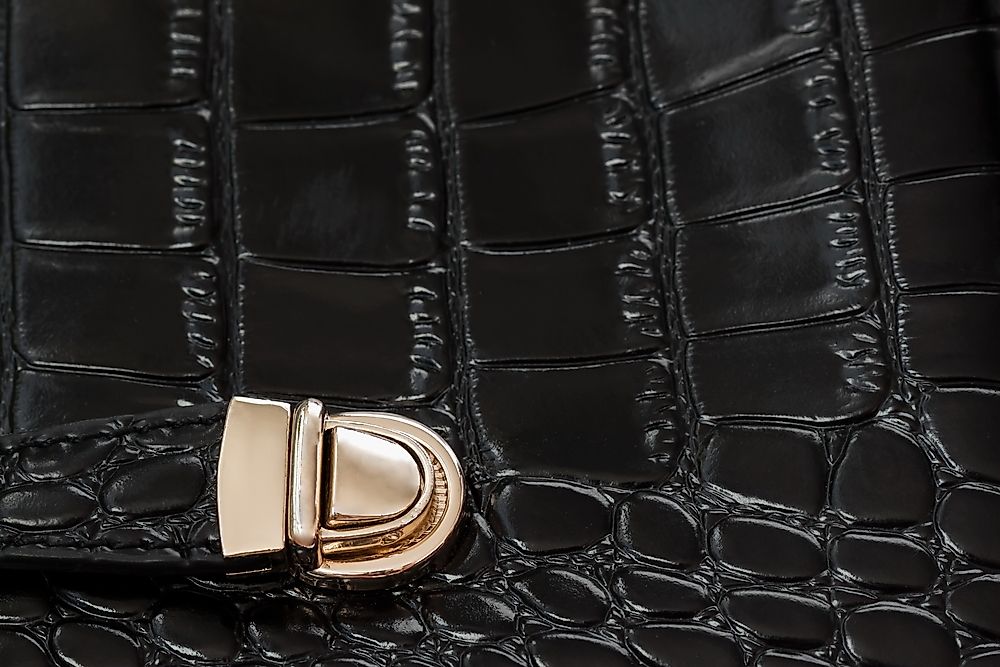Countries With The Highest Share Of CITES Listed Reptile Skin Exports

Illegal animal trading occurs for many reasons, including to fulfill demands for meat, souvenirs, and traditional medicines just to name a few. However, it is the fashion industry that has managed to gain the support of policy makers everywhere in order to secure animal products, such as fur and skins, for luxury clothing items. Wildlife conservation and animal rights advocates from all over the world have stood up against this practice for many years. They have helped to reduce the demand for animal skins and made the trade of some species illegal. Several international governments have signed the Convention on International Trade in Endangered Species of Wild Fauna and Flora (CITES), an agreement to ensure international trade of plants and animals does not threaten their existence. CITES protects around 5,600 species of animals, including nearly 800 reptiles, from trade. Prohibiting the trade of these species has not, however, stopped it. Many people continue to rely on trapping animals as a main income source. One often overlooked species in this discussion is the reptile. This article takes a look at which CITES member states continue to export reptiles from the prohibited list.
Countries With Highest CITES-listed Reptile Skin Exports
The use of reptile skins in the fashion industry is a relatively new practice when compared with the use of fur. The 1800’s size a rise in demand for alligator skins, and thus the practice of alligator farming grew in popularity. One hundred years later, alligator skins were no longer sufficient and the demand for reptile skins expanded to snakes and lizards. Demand continues growing today. Although there are registered farming operations, wild reptiles are often slipped into the legal trade thereby difficult to trace. Of the top 6 legal reptile skin exporting countries, 5 are also the top sources for illegal skins. Colombia and Indonesia are responsible for half the exports of CITES listed reptiles, 26% and 24% respectively.
Colombia
In Colombia, the brown caiman is the primary species exported. The country does not report many as wildly sourced, but the caiman does naturally occur there. Trade experts believe that the farming industry has over-estimated its production capability in order to receive higher export quotas. The export quotas not filled by farm-raised reptiles are supplemented by wild-caught. It is believed that roughly 4 million illegal skins have entered the market from Colombia since 1990.
Indonesia
In Indonesia, python skins are in high demand. These are registered as majority wild-caught and represent a significant source of income for individuals living in poverty. The fact that the majority of these snakes come from the wild makes the trade more difficult to regulate.
United States
The United States is responsible for 13% of all reptile skin seizures from 2005 to 2014. Given the high demand for reptile skins in fashion, it is likely that this number is not accurate. Few seizures are actually reported due to a variety of reasons, including their low market value. Also, illegally sourced skins are often introduced to the market prior to export which results in them being recorded as legal.
Malaysia
Following the US is Malaysia where 10% of seized reptile skins originate. Malaysia has slightly more control than in Indonesia and collectors there are likely to be licensed. Because of the system here, collectors can earn more money in the trade. Pythons are also the main export in this country.
Other countries that have had seizures of reptile skins include Vietnam, which accounted for 8% of global CITES-listed reptile skin seizures, followed by Argentina (8%) and Zimbabwe (3%).
Consequences for Reptile Populations
The trade of reptile skins is deadly for the animals and threatens the very survival of the species. When wild caught reptiles are exported instead of farm-raised, it throws off the balance of their ecosystems. Many are captured before they have had the chance to reproduce which contributes to a further decline in the population. Unfortunately for reptiles, they are not as visually appealing as other furry animals and therefore suffer from a lack of advocates. It is important to remember that many of these species are endangered and are key components to the survival of other plants and animals. An increased effort in tracking illegally caught reptiles is crucial if the species is to continue thriving.
Countries With The Highest Share Of CITES-Listed Reptile Skin Exports
| Rank | Country | Share Of CITES-Listed Reptile Skin Exports |
|---|---|---|
| 1 | Colombia | 26% |
| 2 | Indonesia | 24% |
| 3 | United States Of America | 13% |
| 4 | Malaysia | 10% |
| 5 | Vietnam | 8% |
| 6 | Argentina | 8% |
| 7 | Zimbabwe | 3% |
| 8 | Others | 8% |











